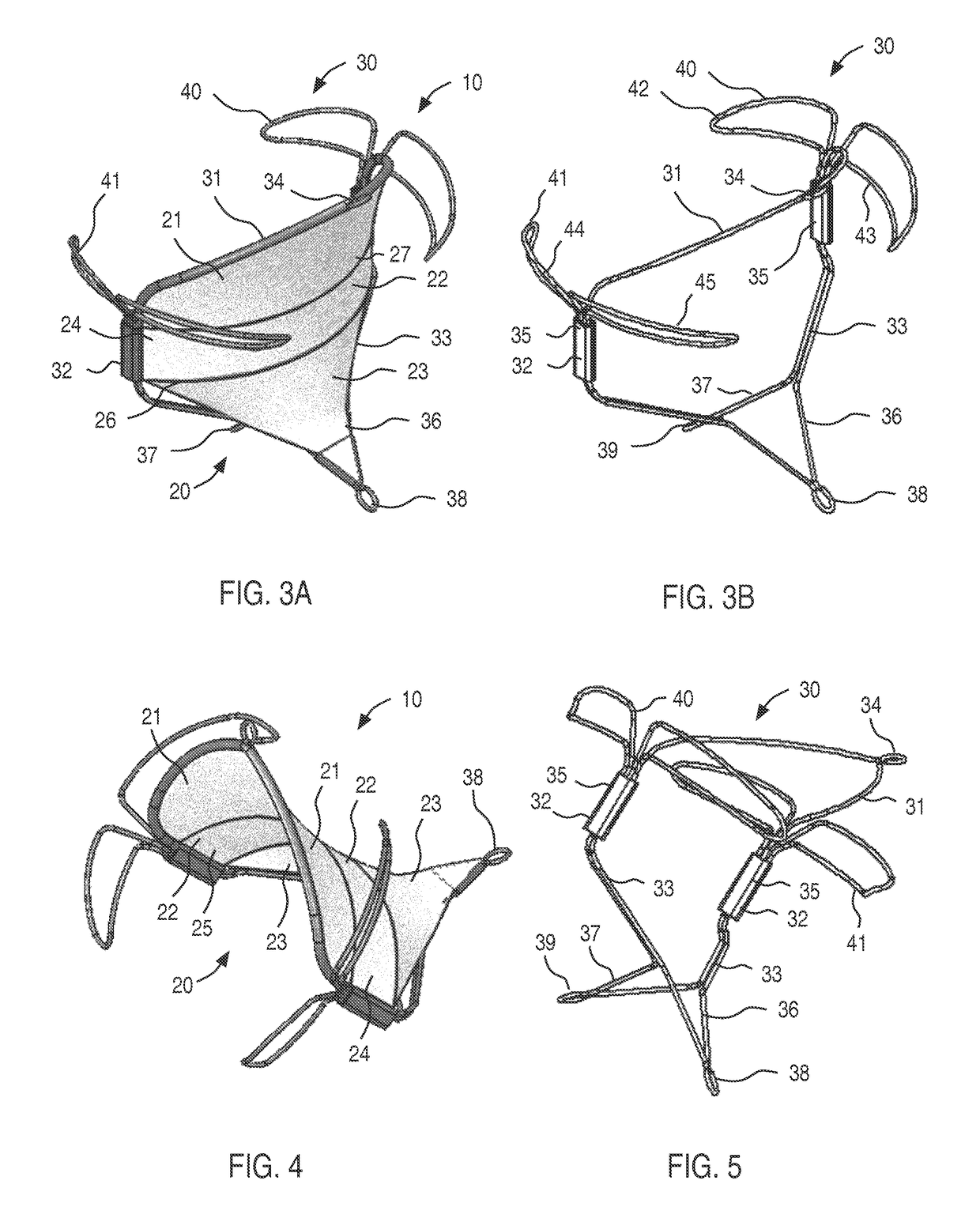Apparatus and methods for treating cardiac valve regurgitation
a cardiac valve and valve valve technology, applied in the field of apparatus and methods for treating cardiac valve regurgitation, can solve the problems of cardiac valves being rendered less effective, serious cardiovascular compromise or even death, valve dysfunction, etc., and achieve the effect of reducing cardiac valve regurgitation
- Summary
- Abstract
- Description
- Claims
- Application Information
AI Technical Summary
Benefits of technology
Problems solved by technology
Method used
Image
Examples
Embodiment Construction
[0045]Apparatus and methods of the present disclosure are designed for repairing a defective cardiac valve, such as a mitral valve, a tricuspid valve, a pulmonary valve, or an aortic valve. In accordance with the principles of the present disclosure, the apparatus and methods may be optimized for use in treating cardiac valve regurgitation when the leaflets of the cardiac valve do not coapt correctly, thus causing blood to leak backwards through the valve as the heart pumps. Advantageously, apparatus of the present disclosure are configured for implantation at a cardiac valve within a blood flowpath such that the native leaflets abut the apparatus during the portion of the cardiac cycle when the cardiac valve attempts to close, thereby enhancing native leaflet coaptation and minimizing regurgitation.
[0046]Referring to FIG. 3A, an illustrative embodiment of a prosthetic device in accordance with the principles of the present disclosure is described. Illustratively, the prosthetic dev...
PUM
 Login to View More
Login to View More Abstract
Description
Claims
Application Information
 Login to View More
Login to View More - R&D
- Intellectual Property
- Life Sciences
- Materials
- Tech Scout
- Unparalleled Data Quality
- Higher Quality Content
- 60% Fewer Hallucinations
Browse by: Latest US Patents, China's latest patents, Technical Efficacy Thesaurus, Application Domain, Technology Topic, Popular Technical Reports.
© 2025 PatSnap. All rights reserved.Legal|Privacy policy|Modern Slavery Act Transparency Statement|Sitemap|About US| Contact US: help@patsnap.com



